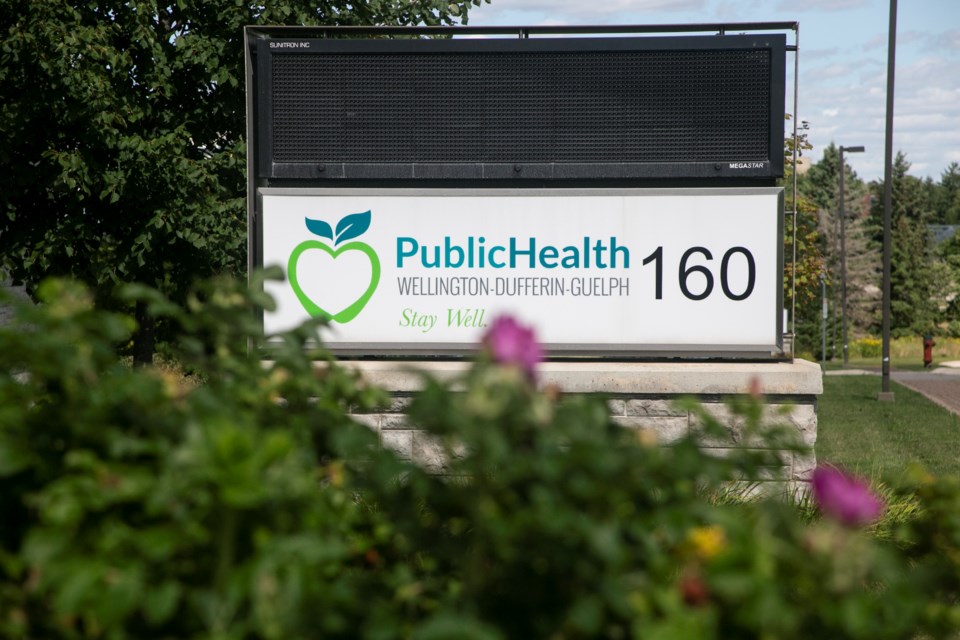New data from Guelph-Wellington-Dufferin Public Health shows that the number of students identifying as non-binary has more than tripled in the last three years.
Their anonymous Well-being Health and Youth (WHY) Survey found that from 2019 to 2022, the number of high school and elementary students openly identifying as non-binary increased from 150 to more than 650, or 3.5 per cent of students.
“Many organizations including ourselves have noticed an increase in 2SLGBTQ+ youth and especially youth identifying as non-binary and using a variety of pronouns,” said Dufferin Child and Family Services CEO Jennifer Moore. “In response we have been expanding our programming at DCAFS to include parents and peer workers in order to meet some of these needs.”
This upward trend is one that will likely continue, according to Stevie Forbes-Roberts, a child and family clinician with DCAFS who runs the GLOW 2SLGBTQ+ Youth Group.
“In general, I think we’re going to see more LGBTQ people coming out at earlier ages, which for a lot of reasons is a good thing,” Forbes-Roberts said. “We do see worse mental health outcomes for people who keep a secret that they feel ashamed of for 40, 50 years, which often happened in the past.”
They said people likely feel safer coming out as non-binary because it’s becoming a more common term: the more people who openly identify, the more people will come out because there is an existing community they can be a part of.
“We see that in high schools, that there's a group of queer and trans kiddos who are kind of protecting each other,” they said.
Forbes-Roberts said online learning also contributed to the increase of students being open about their gender identity.
“People got to put the names they use up on the screen. They were mis-gendered less often in online classes, because they didn’t talk. They weren’t on camera. If their voices are higher octaves or lower octaves, it didn't matter. So a lot of them did find it safer than being in a live classroom.”
However, the WHY survey also showed non-binary students had the “poorest outcomes” compared to cis-gender students.
Forbes-Roberts said this stems from bullying, feeling alone, and feeling misunderstood.
Non-binary people “have existed in culture for a millennium. We have evidence of that in all the documents, in history books and everything,” they said. ”But there’s this notion that this is a new thing, or trendy.”
That’s something Forbes-Roberts hears a lot from parents, that their child’s identity is “trendy,” which they said can be invalidating and makes the child feel unsupported.
“I think that when kiddos are exploring their sexuality or their gender identity, it's a part of normal development and something that children are experiencing and learning from. And responses like that make the child or teen feel like their parents are not understanding their experience.”
In school, there is still “quite a bit of cis-normative and hetero-normative culture in high school, people who are scared of difference and will bully any kind of difference, whether it's disability, or a gender identity.”
“I don't think schools are very safe. But I think that these things are shifting slowly.”
Part of that shift comes from students educating teachers, and teachers seeking more education in general “because they realize they don’t know how to support these students.”
But more needs to be done.
For instance, they said there needs to be more 2SLGBTQ+ youth groups and more gender-neutral bathrooms.
Currently, all 76 public schools, plus school board offices, have at least one “For Use By All” washroom, according to Heather Loney, UGDSB communications manager. The same goes for all the catholic schools in the region; the number of gender-neutral washrooms in each varies depending on the size of the school.
But Forbes-Roberts said the issue is not necessarily that there isn't one, but that it might only be one. If it’s far from class, students who need to use it could find themselves regularly late, they said.
They said they’ve heard from students that a lot of the gender-neutral bathrooms end up having lineups because everyone can use them – which puts students at risk of being outed or bullied because they’re using the gender-neutral bathroom, they said.
However, Loney said any lineups were likely due to the pandemic.
“These washrooms are not to be used as key-only access. We did have to close some school washrooms during the pandemic, so that may have contributed to line ups in some cases.”
Regardless, Forbes-Roberts said the next step is for society to “move towards all bathrooms being gender neutral.”
They also said all teachers should be given education around gender identity. Ideally, the more supportive the school is around gender identity, the more supportive parents will be as well.
In the meantime, Moore said DCAFS is “excited and looking forward to the challenge of creating more supports for this growing community.”



